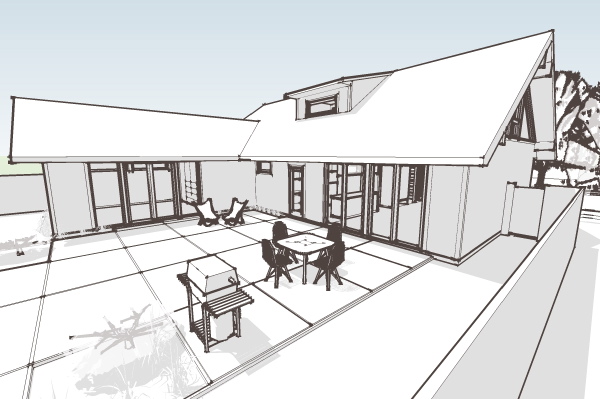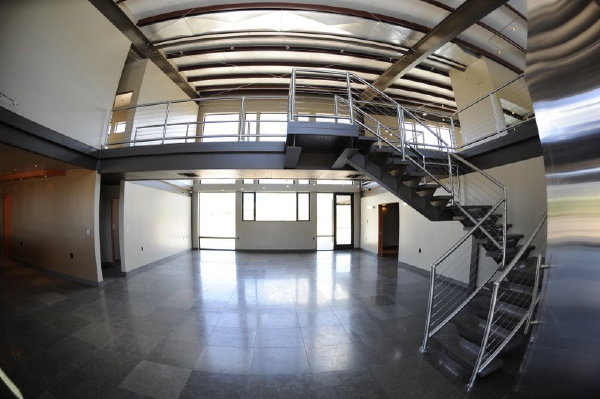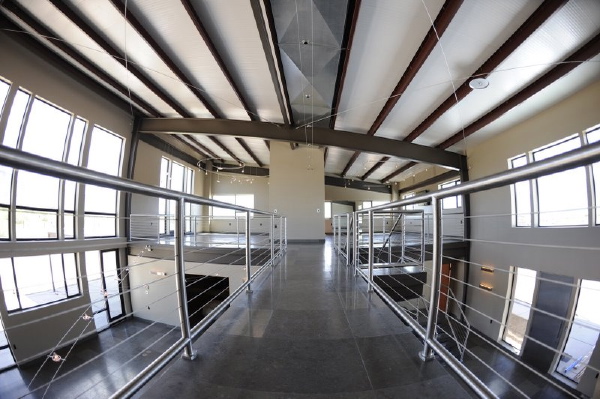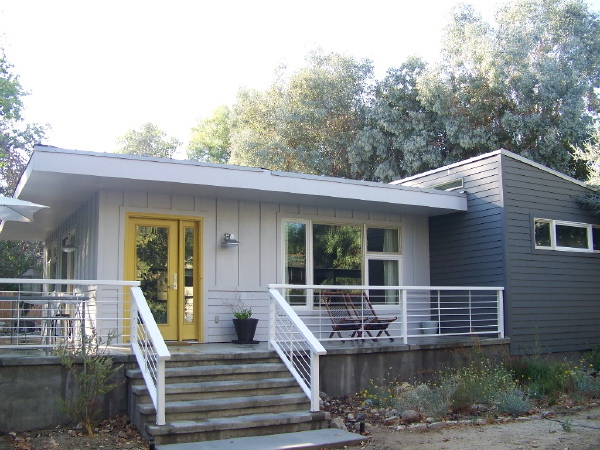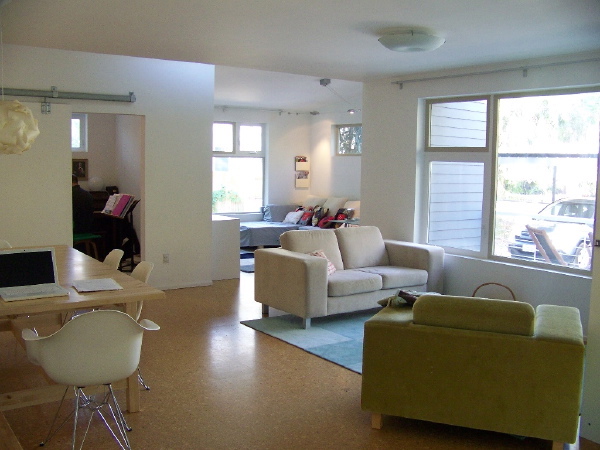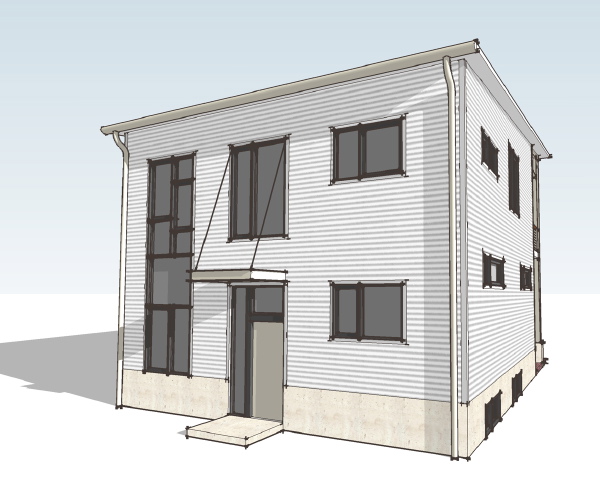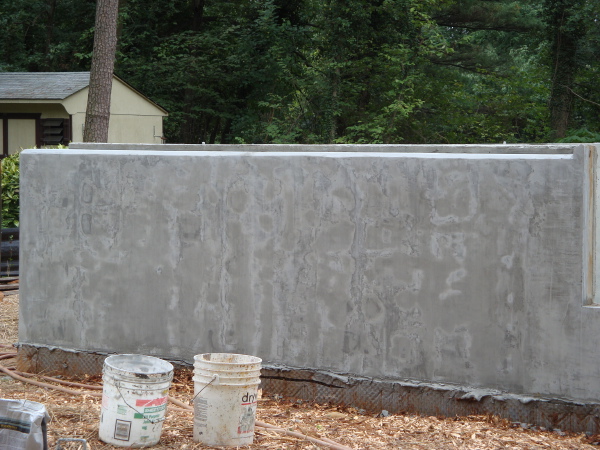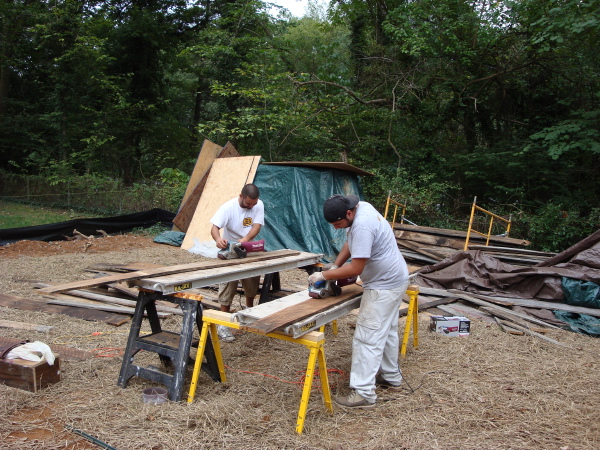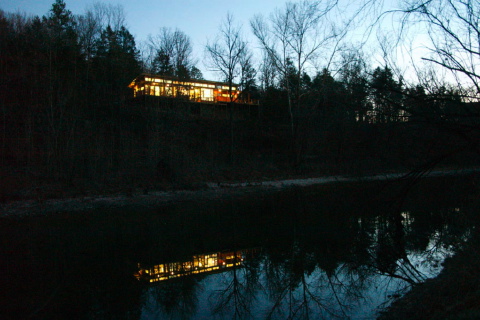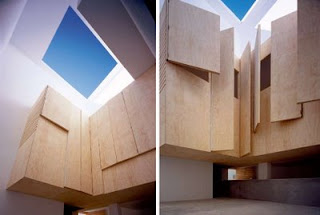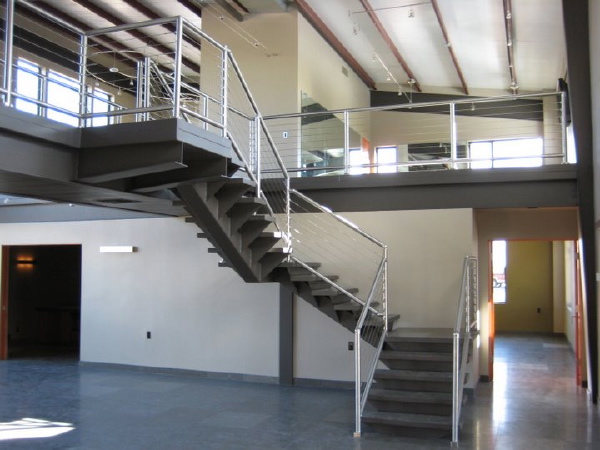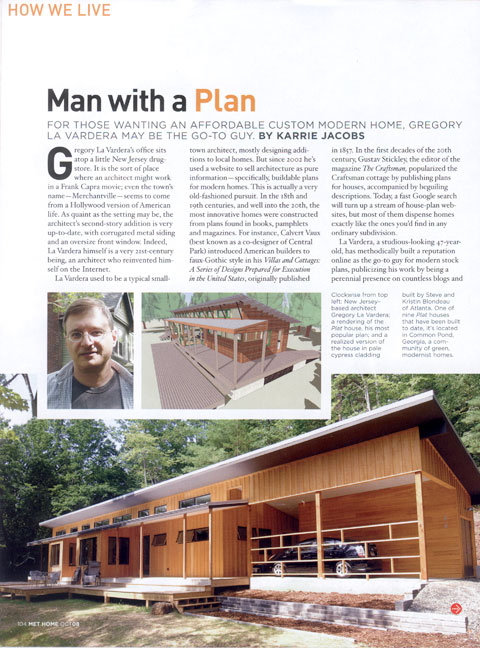
I used to tell people that I didn't love Frank Lloyd Wright houses. But when I did, it was with an air of authority that I hadn't earned, considering I'd never actually been in a Frank Lloyd Wright house. What I meant instead was that I didn't love the handful of Wright-style houses built by his disciples that I had been in. I'm not sure why -- maybe they were too dark inside, or maybe all the built-in furniture was too authoritarian, as if the architect knew better where to put a chair and table than the people living there.
Last week I finally visited Fallingwater, near Pittsburgh, and although I'm not about to make any sweeping generalizations I will say this: I don't love the one Frank Lloyd Wright house I've been in. It was spectacular, yes. But as a house, it was more of a showpiece than a home (this observation based, of course, on the hour-and-a-half I spent being herded through as part of a tour group). Here's an analogy: You go to a museum, admire a terrific modern painting, and then think to yourself that a museum is a good place for it because you really wouldn't want to have it in your house. The same with Fallingwater: I admired it for a lot of reasons, and it might be fun to stay there for a long visit, but I wouldn't want to live there. I'm not saying, by the way, that this "I wouldn't want to live there" standard should be anybody else's standard for architecture criticism, nor that it would even be my standard if I visited Monticello or Kykuit or one of the great houses on the Hudson. But since I live in an area with a lot of modern houses, and live in a modern house myself, it's the gut-reaction standard I'm most comfortable with.
I was in Pittsburgh for the annual conference of the Land Trust Alliance (I'm the acting executive director of Westchester Land Trust, in New York). Each year the conference organizers offer different field trips, to show off their regions and to get people out of the hermetically-sealed conference centers. I chose an excursion that combined a morning visit to Fallingwater with an afternoon bike ride along eight miles of former railroad bed bordering the Youghiogheny River, which is pronounced Yock-agheny, like Allegheny, and is a tributary of the Monongahela, one of Pittsburgh's three rivers.
Fallingwater is a destination, and visiting it is like visiting a major historical site, with its big parking lot, varied license plates, buses, visitors pavilion, and people in windbreakers carrying cameras wandering around asking where are the restrooms. Fallingwater is in the foggy, cool Alleghenies, maybe an hour and a half southeast of Pittsburgh; 140,000 people a year visit the place.
About 45 people were on our bus and although we arrived shortly after 9, our tour of the house was set for 10:15. We were given a tour of the woods around it instead, which turned out to be a good introduction. We circled the house, saw it from different distances, and learned some of its history and the history of the landscape from our tour guide.
The first thing you notice about Fallingwater is that it's in the woods – no lawn, no landscaping, nothing but forest. In fact it is owned by a land trust -- the Western Pennsylvania Conservancy, which has protected about 20,000 acres (including the 1,500-acre Bear Run Nature Reserve, which surrounds Fallingwater) and which was the host of the tour and one of the hosts of the conference. Our first glimpse of the house came from a ridge, looking down on it through the tree trunks. I was surprised at the yellowish, almost adobe color of the exterior, and at how massive and dominant the cantilevered terraces are.

Fallingwater was commissioned in the 1930s by Edgar Kauffman, the owner of Kauffman's department store (above -- it's now Macy's), which was tremendously successful in the days when Pittsburgh was a tremendously successful industrial city. The steel and coke factories made it an extremely dirty and polluted city (salesmen at Kauffman's had to bring a couple of changes of shirts to work because their clothes got so dirty while working inside), and so Kauffman and his wife bought a cabin and a fair amount of land (the site of an old Masonic camp) in the Alleghenies. But ultimately the cabin was too modest and close to the road to suit them, so they brought Wright in, showed him the land and the river (the Bear Run -- creeks there are called "runs," similar to the way we in New York still use the work "kill" for a creek or small river), and commissioned him to design a house there.
Wright visited just once. The common wisdom was that Wright, at 68 years old, was washed up. The Kauffman's Depression-era budget was about $75,000. According to the tale the tour guides tell, Wright took the commission and then produced nothing until, sometime afterwards, Kauffman told him he was traveling to Wisconsin for a meeting to see how the plans were going. When Kauffman was two hours away -- again, according to the tour guides' tale -- Wright began to put his plans on paper and had the house finished by the time Kauffman arrived, greeting him with, "Mr. Kauffman, we’ve been waiting for you!" Once construction started, Kaufman and Wright used local workers, paying laborers 25 cents an hour and skilled workers 80 cents an hour. The house ended up costing $155,000 to build. (In his 2003 book Fallingwater Rising: Frank Lloyd Wright, E.J. Kauffman and America’s Most Extraordinary House, which is considered definitive, Franklin Toker says the story that Wright designed the house in two hours is a myth. I haven’t read it yet and I can’t say how much else that we were told by the Fallingwater tour guide that I'm repeating here is also myth.)
After about an hour, we returned to the visitors pavilion and then walked back down to the house, where we were met by our guide for house tour, an odd little man from West Virginia who reminded me of Tennessee Williams.

The entrance to the house is around back. It's a low, cave-like passageway that passes a foot bath (above) with water spilling from a spout and a bar of soap on a chain, and leads to a heavy glass-and-red-steel door into the first floor.
Fallingwater is a big house, and there were numerous tour groups going through it in stages, in front of us and behind, and so there was little time to linger and get the feel of the place. But here’s what I saw, and what I thought and felt about it:
The living room is modestly-sized with surprisingly low ceilings. A glass door opens to one of the cantilevered terraces overlooking the Bear Run falls. A wide stone staircase in the living room leads down from the floor to the river, with retractable glass panels in red steel frames above the stairs. All of the stone in the house -- and there was a lot of it, including the floor, which was polished with Johnson's Wax -- was Pottsville sandstone quarried just up the path (the bedrock that forms the falls in the Bear Run is Pottsville sandstone aswell). As we were standing near the hearth and dining table, the tour guide referred to the open plan, which he said was unique at the time. "That was something you just didn't find in the 1930s, an open plan .... It was unheard of in the 1930s.” That’s not true of course and when I questioned him about it later, out of earshot of the others, he used the word “unusual” rather than “unique.”
The guest room had varnished walnut blinds, walnut cabinets, a portrait by Diego Rivera on the wall (the guide mentioned that Frida Kahlo, who “was very crude,” stayed at Fallingwater and that Kaufmann was the first American to buy one of her paintings, which Edgar Kauffman Jr. later sold to Madonna), and a rotating chrome fan on the floor. In Liliane Kauffman's bedroom there’s a Picasso etching, a sizable (maybe three-feet tall) Madonna and Child from the 15th century on a sandstone ledge that Wright designed for it, and a framed page from a Bach score that I didn't ask about. Kauffman was a benefactor of the Museum of Modern Art, and there is another Picasso and a Rivera elsewhere in Fallingwater, and six originals from Audubon’s Birds of America, as well as other paintings, sculptures and artifacts, some interesting, others less so, and none of which I recognized or felt compelled to ask about.
We walked through the master bedroom and the studies upstairs, and I found that the higher we went in the house, the more comfortable I became, maybe because I was getting used to the place. Each room, or so it seemed, had its own terrace above the Bear Run, and two of the upstairs rooms had panelled corner windows that swung out individually at right angles so that the entire corner could open to the view of the woods and the sound of the falls. These were stunning, and the guide said that another Wright house was small enough so that Wright was able to design the entire corner of a room like that. The guest wing (as opposed to the guest room in the main house), which you reached by way of a gracefully cuving, canopied walkway, was a beautiful, compact home on its own, with an unusual, U-shaped, above-ground concrete swimming pool on the hill above the main house.
So by the time the we were done with the house, I was softening. Going back to my parochial standard, I'd live in the guest house immediately. But while Fallingwater as a whole was stunning, I can’t say I loved it. Nor can I say I loved the tour. The house is a bit too much of a showpiece and the tour a bit too rushed (and, I suspect, propelled by misinformation).
Kauffman, who lived in Pittsburgh in what the tour guide told me was a Tudor-style house (he didn’t seem particularly confident when he told me that), went on to commission Richard Neutra to design a vacation house for him in Palm Springs – the famous, threatened Kauffman House. He died in 1959, several years after his wife. Edgar Jr., who was a curator at MOMA and a professor of architecture at Columbia University, inherited Fallingwater and interred his parents' remains in a crypt on the property that has doors sculpted by Giacometti (the crypt is off-limits except on rare occasions). Junior donated the house and the property in 1962 to the Western Pennsylvania Conservancy. He died in 1989.-- ta
 In memory of our kind, gentle and creative friend who died over the weekend in San Diego – We’ll miss his visits by train, his concern about our well-being, his holiday phone calls, presence and presents; his drawings, paintings and collages, which arrived in the mail without fail for every New Year, birth and anniversary. . . We’ll miss his kindness, his wisdom, his worldliness.
In memory of our kind, gentle and creative friend who died over the weekend in San Diego – We’ll miss his visits by train, his concern about our well-being, his holiday phone calls, presence and presents; his drawings, paintings and collages, which arrived in the mail without fail for every New Year, birth and anniversary. . . We’ll miss his kindness, his wisdom, his worldliness. – GF + TA + family
– GF + TA + family
